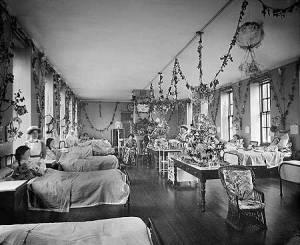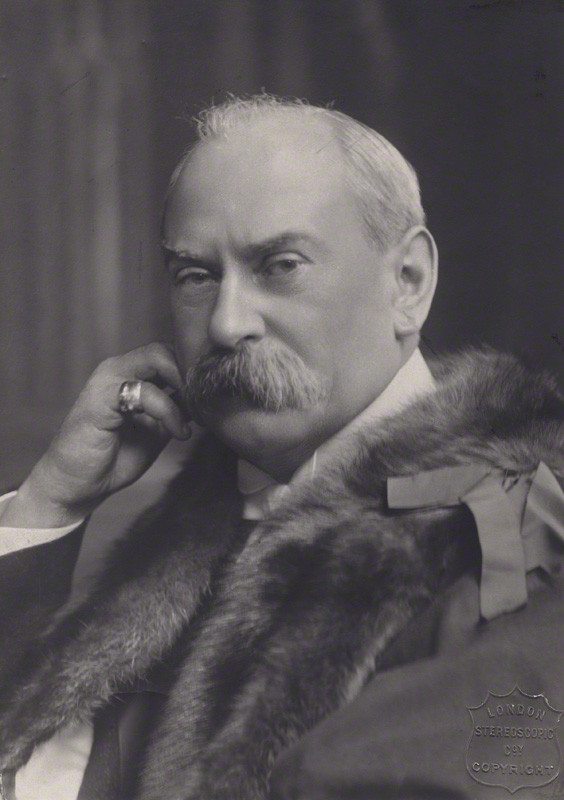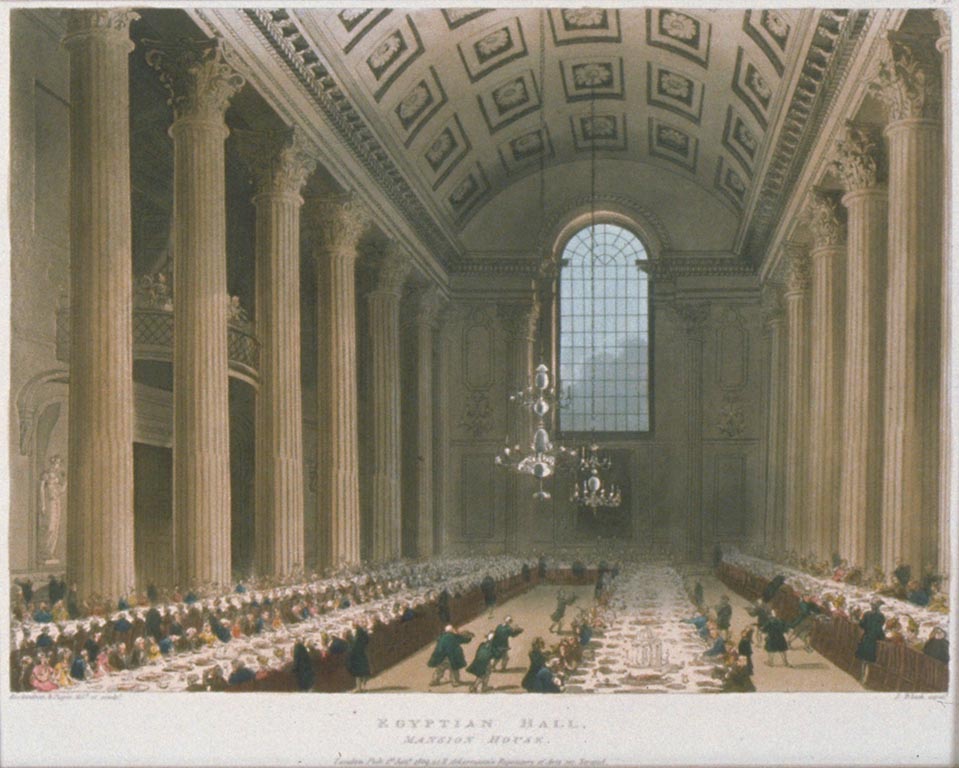I love this one
 The sated pessimist who looks upon all things that are made and finds them soil, who distills poison from every flower, who, himself drinking life to the lees, would close the springs to others, need seek no other tonic to his disordered system than he would have found on Wednesday afternoon among the poor little afflicted innocents to whom the Sisters of Mercy minister at their hospital in St. John’s Wood.
The sated pessimist who looks upon all things that are made and finds them soil, who distills poison from every flower, who, himself drinking life to the lees, would close the springs to others, need seek no other tonic to his disordered system than he would have found on Wednesday afternoon among the poor little afflicted innocents to whom the Sisters of Mercy minister at their hospital in St. John’s Wood.
 The children’s ward was transformed into a fairy palace of delight, with electric lights glowing everywhere among the most graceful festoons, and a tall Christmas tree laden with wonderful gifts, and also glistening with electric sparks that hung like gems among the branches, and the little sufferers, bearing vicariously the world’s sorrow in their frail bodies, fairly beaming with smiles and laughter as they reflected the sunny looks of the Sisters that are ever beneficently bent upon them. They lay in their little beds tricked out in gay and graceful costumes, bright, eager, fluttering with excitement, veritable blossoms of humanity, each hearing shining witness to the good deeds that redeem a naughty world. And a great company was there to share in the pleasure, first of whom must be mentioned Mr. Sperati, who personally contributed, designed and executed all the beautiful decorations.
The children’s ward was transformed into a fairy palace of delight, with electric lights glowing everywhere among the most graceful festoons, and a tall Christmas tree laden with wonderful gifts, and also glistening with electric sparks that hung like gems among the branches, and the little sufferers, bearing vicariously the world’s sorrow in their frail bodies, fairly beaming with smiles and laughter as they reflected the sunny looks of the Sisters that are ever beneficently bent upon them. They lay in their little beds tricked out in gay and graceful costumes, bright, eager, fluttering with excitement, veritable blossoms of humanity, each hearing shining witness to the good deeds that redeem a naughty world. And a great company was there to share in the pleasure, first of whom must be mentioned Mr. Sperati, who personally contributed, designed and executed all the beautiful decorations.
There’s a nice mixture of the family peering at the sick children, and getting their mementos, including Charles Russell, his sister in law, quite possibly the nephew who inherits his baronetcy, Lady Watson Parker, Charlotte Purssell’s mother in law, and almost inevitably the Roper Parkingtons.
Among other visitors were the Count and Countess de Torre Diaz, Mrs. Witham and family, Mrs. Frank Eyston, the Lady Hylton, Hon. Charles Russell, Hon. Mrs. Cyril Russell and children, Mrs. and Miss Louis Taylor, Mrs. Wegg Prosser, Madame Van de Velde, the Misses Van de Velde, Mrs. Semper, Mrs. Bellamy and family, Miss Barton, Lady Fleming, Miss Sperati, Miss Burke, Mr. and Mrs. O’Connor and son, Mr. and Mrs. George Herbert, Miss de Zulueta, Mrs. J. Weld and family, Miss Weld, Lady and Miss Vavasour, the Right Rev. Mgr. Canon Fenton, V.G., Mrs. Macdonell, Mrs. Cuthbert Macdonell and children, the Very Rev. Canon Rymer, D.D., the Very Rev. Canon Delaney, Mrs. Barry Ball and family, the Misses Dawson the Hon. Mrs. le Poer Trench, Mrs. Charles Roskell and children, Miss Roskell, Dr. and Miss Blackett, Mrs. Le Grande, Dr. and Mrs Harold, Mrs. Madden, Lady Watson Parker, Mrs. Colvin, Mrs Clementi Smith, Sir Roper and Lady Parkington, Signora Campione, Mrs. and Miss Walthew, Dr. Constable and family, the Misses Cahir Miss Pownall, Miss Fanny Pownall, the Misses Judd, Mr. and Mrs. Sperati, Dr. and Miss Ware, Mr. and Mrs. Blackett, and many others. A post-office was set up, and each of the visitors received therefrom directed, sealed, stamped and delivered a parcel containing some memento:of their visit.  There was music too contributed by Miss Pinto Leite and Miss Perret, and all the scene was filled with a gladness that will not die out of the faces of of those innocent sufferers for many a day in the new year.
There was music too contributed by Miss Pinto Leite and Miss Perret, and all the scene was filled with a gladness that will not die out of the faces of of those innocent sufferers for many a day in the new year.
The hospital is beautifully placed in Grove-end-road, and is a spacious, well-appointed building, fit in every way for its purposes. The work of completion of the men’s wing is unhappily suspended, owing to a plentiful lack of funds. The King’s Hospital Fund contributes £500 a year, and granted a donation of £500. It remains for the Catholic public to do the rest.
The above text was found on p.34, 10th January 1903 in “The Tablet: The International Catholic News Weekly.” Reproduced with kind permission of the Publisher. The Tablet can be found at http://www.thetablet.co.uk .

